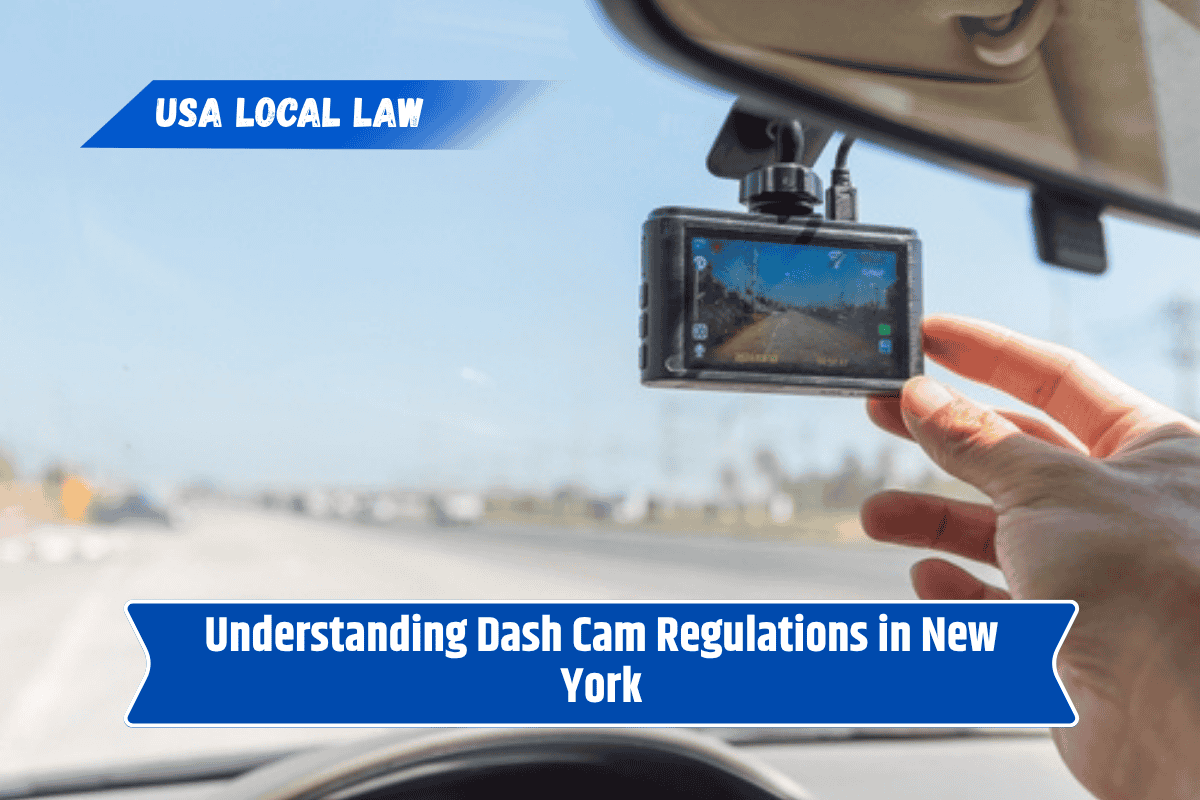Dash cams, or dashboard cameras, have become popular tools for drivers to record their trips, provide evidence in the event of an accident, or simply monitor driving conditions. If you’re driving in New York, it’s important to understand the legal regulations around dash cams to ensure you use them in compliance with state laws.
While dash cams can be incredibly helpful, there are specific rules about where they can be placed, how they should be used, and the data they collect. Let’s dive into the key things you need to know about dash cam regulations in New York.
Are Dash Cams Legal in New York?
Yes, dash cams are legal to use in New York. There are no laws that outright ban the use of dashboard cameras in vehicles. Drivers are free to install and use dash cams to record their driving, accidents, or other relevant events while on the road.
However, while the use of dash cams is permitted, there are some important regulations to follow to avoid any legal issues.
Installing Dash Cams in New York
When installing a dash cam in New York, it’s essential to ensure that the camera does not obstruct your view of the road. The placement of the camera is one of the main concerns when it comes to legality. New York law prohibits any objects that block the driver’s view of the road, and this includes dashboard cameras.
For example, you cannot place a dash cam in a way that blocks the windshield or side mirrors. The device should be mounted in a way that doesn’t interfere with your line of sight, especially in areas like the driver’s side or near the rearview mirror.
If your dash cam obstructs your view, you may be ticketed for violating New York’s Vehicle and Traffic Law.
Laws Regarding Window Tinting and Dash Cams
In New York, window tinting laws are very specific about the level of tint allowed on vehicle windows. While this doesn’t directly affect the use of dash cams, if you’re installing a dash cam with a suction mount, it’s important to be aware that placing the camera on tinted windows may lead to visibility issues.
The camera should be positioned to record clearly without obstruction or impairment from window tinting.
If you have dark tints on your windows, make sure the dash cam doesn’t hinder your ability to see through the window or limit your visibility. This could lead to problems with the police if your dash cam placement is deemed to impair your ability to drive safely.
Recording and Privacy Laws in New York
While dash cams are legal in New York, it’s important to consider the state’s privacy laws, especially when it comes to recording audio. New York is a “one-party consent” state when it comes to recording conversations.
This means that as long as you are a part of the conversation, you don’t need the consent of other parties to record audio. However, there are some nuances to keep in mind.
Audio Recording in Public Spaces
If your dash cam has the ability to record audio, be cautious about recording conversations with passengers or others outside your vehicle. In general, if you’re recording conversations within your car, and you’re a part of the conversation, you don’t need permission from other passengers.
However, it’s always advisable to inform passengers that your vehicle is equipped with a recording device to avoid any misunderstandings.
Recording Outside of the Vehicle
When it comes to recording audio or video outside your vehicle, it is typically acceptable in public spaces like streets, highways, and other locations where there is no expectation of privacy. However, if your dash cam records audio of private conversations from people walking by or inside nearby vehicles, there could be privacy concerns.
While New York doesn’t require “two-party consent” for recording conversations, it’s always better to avoid unnecessary recording of conversations between others unless you are involved in the conversation.
Dash Cams as Evidence in Court
Dash cams can be a useful tool when it comes to proving your case in the event of an accident or traffic dispute. In New York, the footage captured by a dash cam can be used as evidence in court.
If you are involved in an accident or need to provide proof of an event, dash cam recordings can help support your side of the story. The footage may be used to show that you were not at fault in an accident or to provide a clear picture of what happened during a traffic stop.
Admissibility in Court
Dash cam footage is generally admissible as evidence in court, as long as it is relevant to the case. However, the footage must be clear and authentic. If you plan to use dash cam footage in court, it’s important to ensure that the camera is working properly and that the video quality is high enough to provide a clear representation of the event.
Some courts may require proof that the footage hasn’t been tampered with, so it’s a good idea to preserve the original video.
In New York, dash cams are legal to use, but it’s important to adhere to specific rules about placement, privacy, and use. The camera must not obstruct your view, and it should be installed in a way that doesn’t violate traffic laws regarding visibility.
When it comes to audio recording, be mindful of privacy laws and avoid recording conversations without consent in certain situations. Additionally, dash cam footage can be a valuable tool in court if you need to provide evidence of an accident or traffic violation.
Before you install a dash cam, make sure it’s mounted safely, doesn’t block your vision, and that you are aware of how the footage may be used. By following these guidelines, you can safely use your dash cam in New York while staying within the law.
